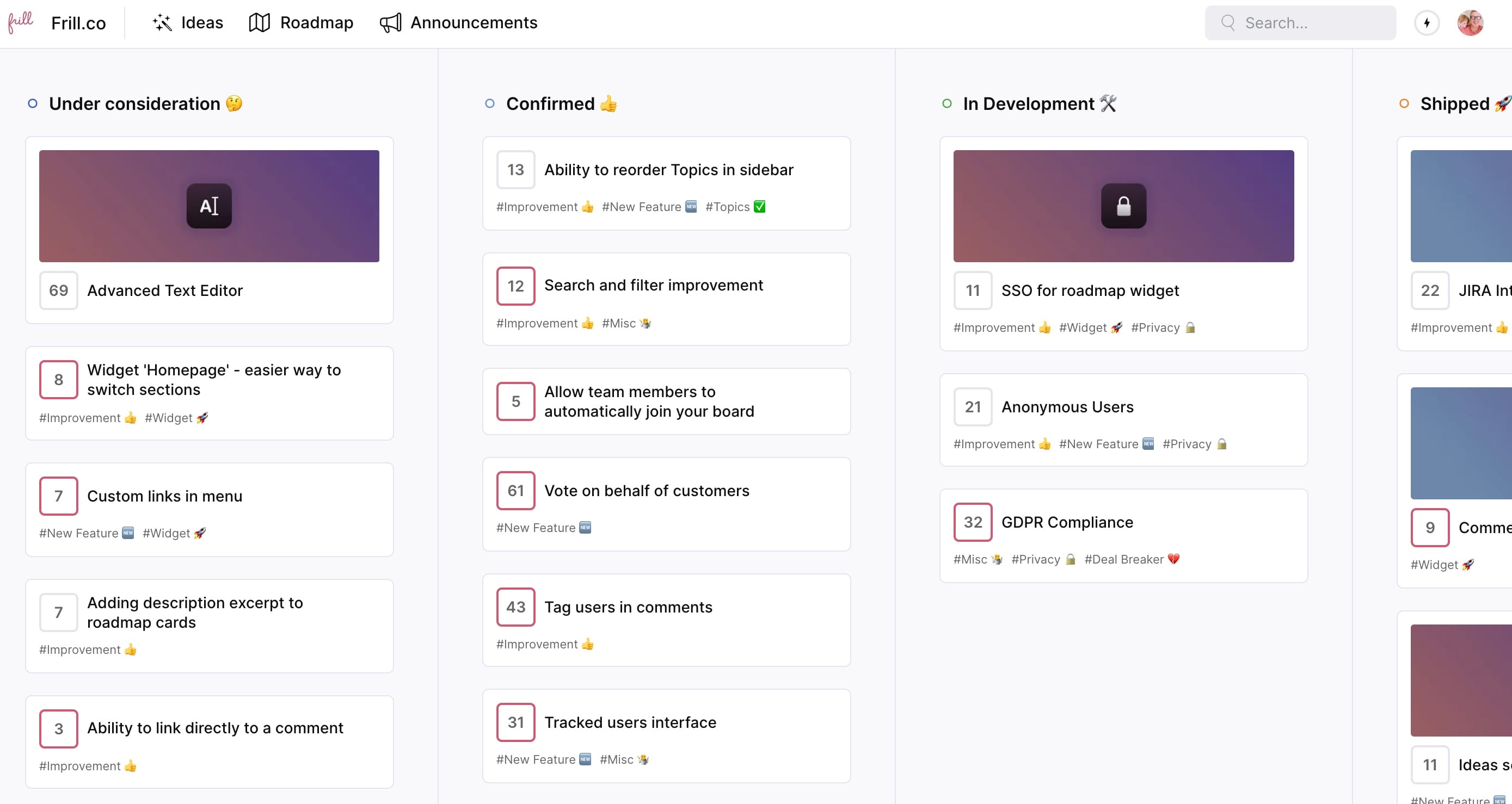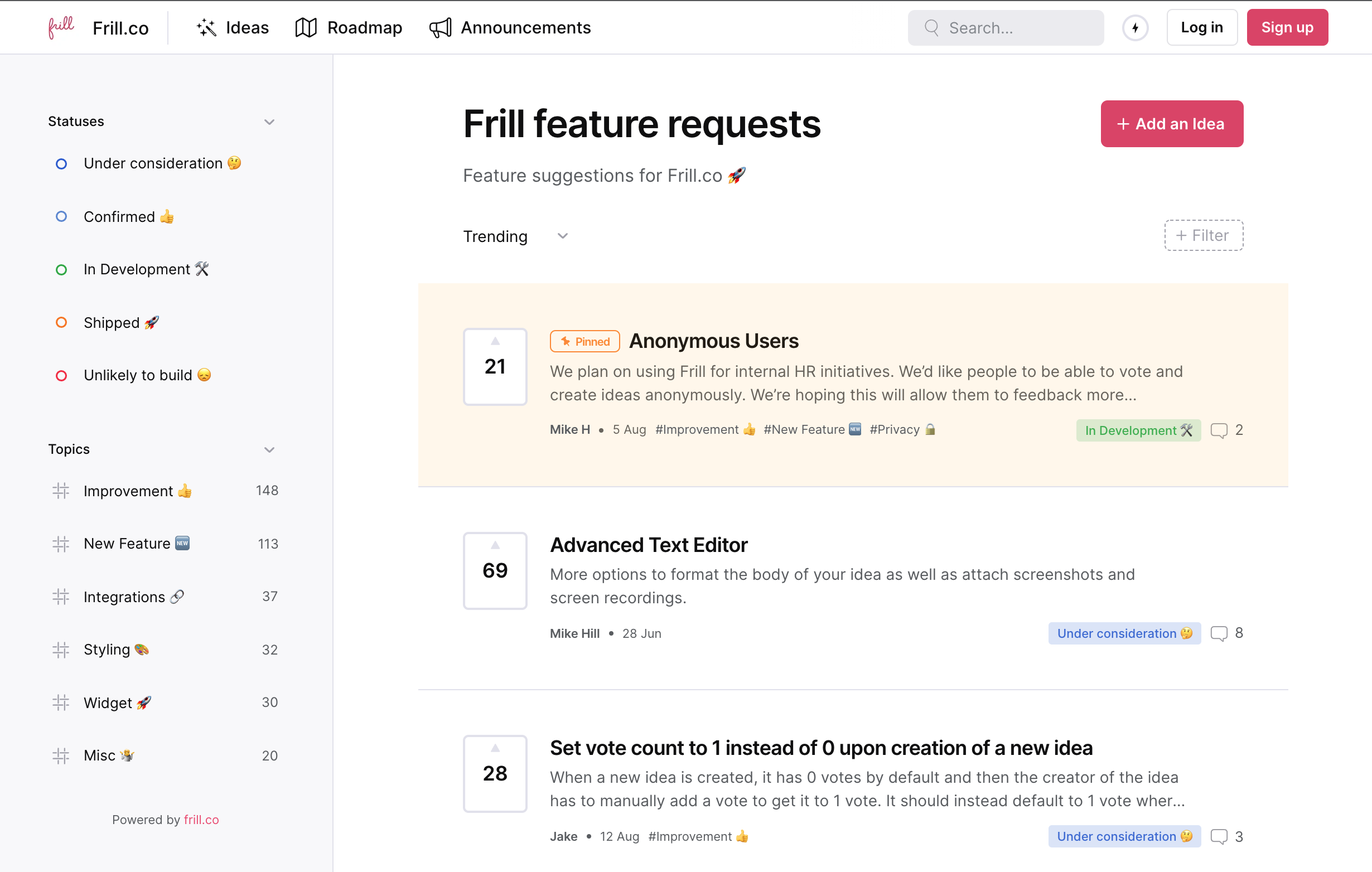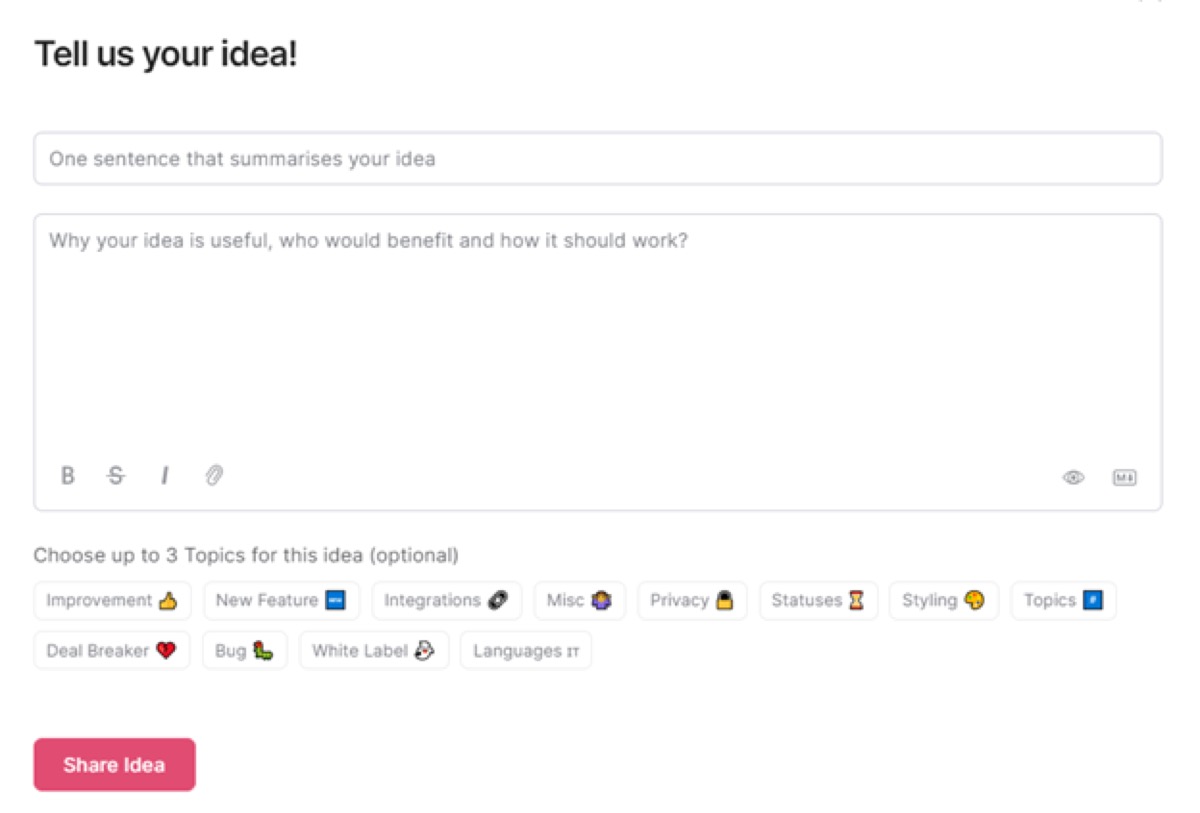Guide to Customer Feedback Management for SaaS

By Mike Hill
Last updated on Fri Mar 26 2021
For SaaS companies, everybody knows customer feedback is one of the most important tools in your arsenal.
Without it, you won’t know how your customers feel about your product. You won’t understand their frustrations, what they love, or what they hate.
This feedback is integral for improving your SaaS product and growing customer loyalty/retention.
Of course, collecting feedback is one thing.
Managing it to be organized, useful, and meaningful is another.
Let’s take a closer look at why customer feedback management is challenging. Then, we’ll talk about ways to simplify it so you can use your customer feedback to change your product or company for the better.
Why is Customer Feedback Management Challenging?
Feedback management is often difficult for even the savviest SaaS companies.
<blockquote>One of the biggest challenges inherent in customer feedback management is the sheer number of channels you need to pull from and how hard it is to glean meaningful insights from such far-flung sources.</blockquote>
You’ll often hear these complaints:
“There’s too much of it.”
“It’s all over the place.”
“It’s tough to organize.”
It’s no coincidence these statements are all related. One of the biggest challenges inherent in customer feedback management is the sheer number of channels you need to pull from and how hard it is to glean meaningful insights from such far-flung sources.
If you’re like most companies, feedback is probably coming in through email, your social media channels, your help desk/chatbots, blog comments, customer surveys/polls, third-party review sites, etc.
Collecting feedback is easy. Analyzing the feedback from each of these disparate data sources is difficult, if not impossible. If you can’t perform these steps, there’s no way you can gain valuable insights to actually act on.
That’s why so many SaaS companies have difficulty closing the feedback loop – the process of using customer feedback to improve your product or business. They may have feedback coming out of their ears but no strategy or process for collating it, categorizing it, and sifting through it to find the insights that are worth implementing.
This begs the question: How do you simplify customer feedback management so you can do all of these things?
Sign up to Frill
Ready to automate your customer feedback? Or perhaps create a public Roadmap? Get started with Frill’s free plan.
Get started with FrillHow to Simplify Customer Feedback Management
Feedback management doesn’t have to be difficult. Remember these points to simplify it to make it for you rather than against you.
1. Centralize Your Customer Feedback
Ultimately, one of the best ways to simplify your SaaS feedback management is to centralize it while striking a balance of which channels you actively monitor.
It’s impossible to keep up with the sheer number of possibilities for listening in to what customers are saying. Plus, not all channels provide worthwhile information.
Pare down to only a few feedback channels. You might, for instance, choose to listen to two – one for solicited feedback, one for unsolicited feedback.
Unsolicited feedback
is feedback shared at the customer’s whim. They’ll often offer it spontaneously on social media, via email, or while they’re interacting with your help desk, for example.
Solicited feedback
is the kind your company directly requests from customers. With Frill, you
on idea boards. Other customers can upvote and comment on ideas, so you’ll see what’s popular with users as well as any multi-user issues.

With Frill, your customers are the ones who categorize and prioritize feedback and ideas. That means a lot of the sifting and sorting is done for you – and good ideas naturally float to the top of the pile.
Your customers may come across things that frustrate them about your product, but they might not reach out to you about them (unless you ask, and make it easy).
2. Request Feedback from Customers in the Right Place
When you request customer feedback, make sure you’re doing it at the right time and place.
For SaaS companies developing a product, that means placing feedback opportunities directly inside your app, alongside the user experience. Here’s why that’s so important, according to Neil Patel: “Your customers are constantly thinking of ways that your business could be better. More often than not, they won’t reach out to your support team.”
Your customers may come across things that frustrate them about your product, but they might not reach out to you about them (unless you ask, and make it easy).
With a quick, in-app feedback collection strategy, you’ll get customer insights, ideas, and issues in context, right when they’re experiencing them or thinking about how your product could be better. You’ll catch frustrations when they happen and give your customers an outlet for voicing them.
Without that outlet and the possibility of a fix or better outcome, your customer might walk away and not look back.
Using Frill, requesting customer feedback is pretty simple: Just trigger a pop-up inside your app that links to your Frill idea board. One click will take your customer to a form where they can tell you about their idea:

3. Communicate New Product Improvements in Context
How do customers know you’re listening to their ideas and suggestions?
This is an integral piece of closing the feedback loop. You need to follow-up with customers and let them know you heard them, loud and clear – especially when you implement their ideas.
To put it simply, you need ways to communicate product improvements that directly stem from the feedback you received.
There are multiple ways to do this (including changelogs, posting on social, etc.), but Frill has a quick way to make it easier to share your pipeline of changes connected to customer ideas.
Enter Frill’s Announcements and Roadmap.
These pieces live right alongside your idea board. Announcements keep your customers informed about which new features you’ve shipped. The Roadmap lays out which ideas you’re considering, which ones you’re working on, and which ones have been added.
Here’s Frill’s Roadmap in action:

As you can see, this provides accountability to your customers. They can see your implementation of their feedback in real-time and watch as ideas move from consideration to development to shipped.
4. Prioritize the Right Customer Feedback for Better Management
One of the last steps in the customer feedback loop is implementation – when you take the feedback you’ve gathered and act on it. This is after you’ve sifted through and critically analyzed the many ideas customers submitted.
What should that analysis entail? Which customer ideas should you prioritize, and which should you pass over?
There’s no way you can consider every piece of feedback you receive on the same level. Many ideas will come from left field and result from obscure use cases no one will ever replicate.
Not all ideas are born equal, so don’t waste time trying to give equal weight to all of them. Instead, maximize your time by focusing on the ideas and feedback that will give you the most bang for your buck.
For SaaS product companies, it’s all about fleshing out your product vision while meeting the needs of your users. Ask yourself these questions to determine whether a customer idea is worth your time:
**Does it tie into your product vision? **Will implementing the feedback help that vision come to life more fully?
Does the suggestion or idea meet the needs of most users?
If it will only help a select few, it’s probably not worth the time.
How often is the idea or feature requested?
Popular or trending suggestions are always worth serious consideration.
Will the suggestion help users get better results from existing features?
You want your platform’s overall value to be cohesive, not divergent.
Better Customer Feedback Management, Better Product
The way you gather, manage, and implement customer feedback will directly affect your product and your business.
There’s no way around it. Customer feedback is the lifeblood of product development.
Without proper management, important customer ideas and suggestions will get lost. Customers will turn away, and you’ll seem tone-deaf to what your users want.
That’s why it’s so vital to implement a system and strategy for feedback.
Rely on a few key channels to gather it. Make sure you’re requesting feedback at the right place and time. Update your customers on the feedback you’re considering, developing, and adding.
Finally, focus on feedback that will help you reach your goals, align with your product vision, and will serve most users.
Sign up to Frill
Ready to automate your customer feedback? Or perhaps create a public Roadmap? Get started with Frill’s free plan.
Get started with Frill